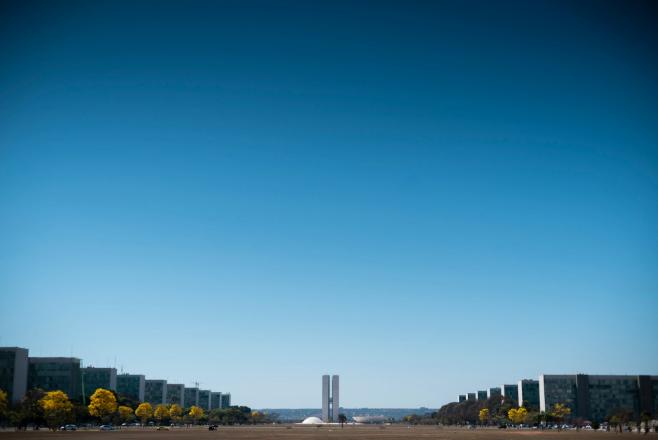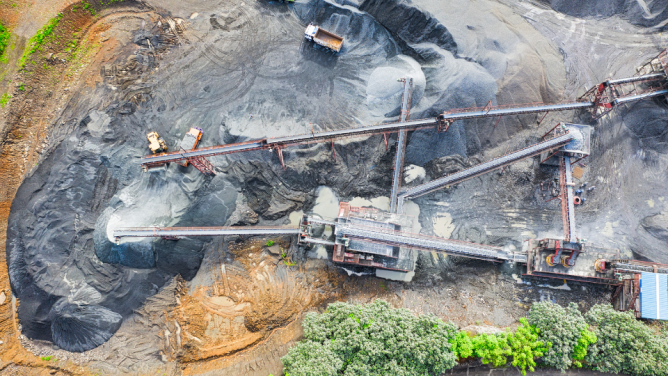Cities planned by the human spirit down to the finest detail to correspond to a political or technological ideal of a given era would be cold, inflexible, inhospitable for their inhabitants and, ultimately, often deserted. They are also considered as vanity projects, which often fall flat on their faces. Take The Line, the much-talked about linear city designed as part of a wider Neom urban project in Saudia Arabia, which will now be 70 times smaller than initially planned by 2030.
We are quick to forget that Paris, with its wide boulevards and zinc-topped roofs, attracting tourists from the world over, owes a lot to Baron Haussmann’s unique vision, who was a senior official of the Second Empire. Meanwhile St. Petersburg was previously inhabitable marshland, until Tsar Peter the Great decided to build the new capital for his empire here, moving it from Moscow. From Vienna’s Hundertwasserhaus to the anarchist phalanstères, utopian urban planning and architectural projects can also be real laboratories of experimentation, sometimes crowned with success, often providing many insightful lessons. Let’s take a look at several cities that each differ in their own way, but were all built from scratch, born from grandiose visions, utopian ambitions or from a desire to explore.
Woven City: the self-declared laboratory
In 2021, Toyota launched its somewhat crazy project: to build a carbon-neutral smart city from scratch at the foot of Mount Fuji. Designed by the Japanese car manufacturer, this new city is envisaged as a small laboratory to test ideas for the future and is intended to accommodate around 2,000 people, including company employees, visiting scientists and representatives of companies volunteering to participate in the project. It shall be a living experiment for a carbon-neutral energy network, while testing certain technologies of tomorrow, such as autonomous cars, which are difficult to test in a hyper-dense urban environments.
The project is still under construction. It features wooden houses grouped in blocks of eight around a shared, green courtyard, which are built in keeping traditional Japanese architecture. Each comes fitted with solar panels on the roof, whose energy will be stored in batteries and hydrogen cells. Sensors are integrated into the houses, promising to monitor residents’ health and automatically take care of certain domestic chores. Autonomous vehicles will be tested on the roads, but there will be ample space for be pedestrians and bikes. Toyota’s initiative is interesting in that it stands by its aspect of futuristic experimentation, and it has been designed from the outset as being a small-scale experiment rather than a large-scale utopian city.
Masdar City: the gulf between sustainable city and ghost town
How do you envisage the post-oil era in an emirate that owes its prosperity to black gold? Introducing, Masdar: a city in Abu Dhabi launched with great fanfare in 2006, established by Sultan al-Jaber, president of the renewable energy company Masdar and state oil company Adnoc.
The city undeniably boasts architectural innovation and achievements, some of which are based on traditional low-tech techniques: the buildings are built in terracotta, an ancient local material resistant to high temperatures, and equipped with badguirs, a traditional Persian architectural method which creates natural ventilation in buildings. Meanwhile, other innovations involve cutting-edge ideas, like autonomous cars traveling on underground roads, or solar panel roofs.
Originally designed to accommodate 40,000 people, the city currently only has 6,000 residents, who have mainly come to study artificial intelligence at the specialist university. Many new cities have experienced the same problem, in that once the hype has died down, they struggle to convince people to come and live there, and create a social life from scratch. The city is still yet to resolve the problem concerning feeding its residents: a device aimed at capturing humidity in the atmosphere by condensation was tested without success, and the on-site vertical farms just didn’t grow. While it is an interesting initiative which has hit the mark on certain points, Masdar suffers from a problem inherent to utopian cities (convincing individuals to move there) and sometimes gives in to a sort of technological solutionism, which cannot solve everything.
Brasilia: a capital built from scratch
Inaugurated in 1960, the Brazilian capital is the result of daring urban planning and futuristic architecture designed by a trio of visionaries: the urban planner Lúcio Costa, architect Oscar Niemeyer, and the landscaper Roberto Burle Marx. This utopian capital is designed around the car, then a symbol of the future, with housing estates (“superquadras”) filled with green spaces, each housing a church, a school and shops, and designed to be linked by highways. It symbolically embodies Brazilian democracy, the administrative buildings being arranged in order of increasing political importance as you approach Three Powers Plaza, where the three branches of power – executive, legislative and judicial – are located.
But the egalitarian ideal that powered the city is today being undermined: designed to house 500,000 people, it now has a population of 2.7 million, with only the wealthy living in the superquadras, while the remaining residents crowd into the neighboring outskirts and endure huge traffic jams just to get to work. “From the socialist city that it ought to be, Brasília is transformed into the absolute image of social difference,” wrote the novelist Umberto Eco.
The miracle of Shenzhen: the pragmatic new city
People tend to forget that China’s beating heart of innovation was meticulously planned. In 1979, Deng Xiaoping’s government turned this peaceful fishing village of just 30,000 inhabitants into a special economic zone, whose local legal system was designed to attract foreign investors. Urban green space was integrated into the city’s design, for which 20,000 laborers were hired to come and build this future metropolis.
The city’s economic take-off was primarily thanks to the manufacturing industry, with low labor costs enabling it to attract investments and propel its status towards becoming the “world’s factory.” In the 1990s, it turned its focus towards cutting-edge tech, with the emergence of several Chinese tech giants, such as Huawei, ZTE and Tencent. Today it remains a vibrant hub for innovation, driving numerous smart city initiatives. While its success is down to clever government planning, Shenzhen was never designed as a utopia – which perhaps partly explains its success?
Sacrificing brand new cities on the altar of innovation?
Not all utopian city projects enjoy the same prospects of success. Those who fully embrace the experimental aspect of the initiative and strive to test a certain number of technological, architectural or urban innovations in a downsized environment have the greatest chance of success.
On the other hand, those who set grandiose objectives from the outset, promising to house tens of thousands of people in a futuristic, high-tech place in order to demonstrate power and/or attract investment fail in the vast majority of cases.
Despite these failed attempts, one thing is clear is that these projects are still popular, as new initiatives continue to emerge regularly, reflecting the major concerns of the times.



